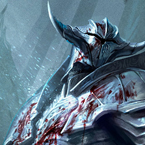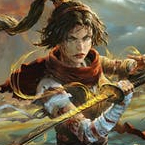Welcome back to my Oldhim Pro Series. This is the second of four installments. You can read the introduction here, and the first installment here. It’s hard to believe we are already at the halfway mark, but the pacing of articles 3-4 will allow for more time for the Tales of Aria meta to emerge and for the deck to properly adapt to it.
It’s been a busy week in FaB for me, and I’ve been playing all the Oldhim I can in several events to further test and refine the decklist and hone its strategy. I’m still at the stage where I feel like I am learning something new each and every game I play. The potential lines of play and depth of Oldhim has been staggering compared to the somewhat linear nature of Bravo.
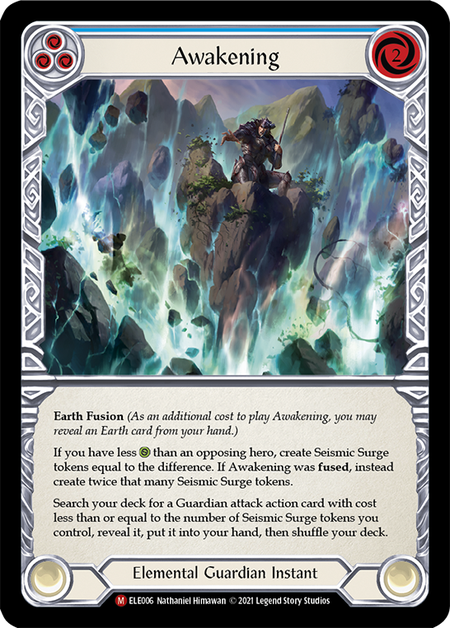
Awakening has been a fun card to learn, always endeavoring to maximize its potential in new ways. There’s a certain thrill in intentionally taking damage to pivot the tempo and seek a valuable payoff. It feels similar to rolling the dice on Scabskin Leathers, except much more calculated.
Outside of my events, I had a chance to guest star on Fresh & Buds to talk about Oldhim. I'd recommend the listen if you want to learn a little bit more about some of the card choices in the deck and to augment everything I have written about Oldhim on the Rathe Times! Listen to the podcast here.
Current Testing & Considerations
While it is perhaps a double-edged sword, you are joining me in real-time on this journey to build and refine Oldhim. As I mentioned in the first article of the series, that means that the decklist will evolve over time to better tackle the emerging meta and address any weaknesses or vulnerabilities of the strategy that emerge in my extended testing at events against some of the best players in the world.
The best way for me to introduce changes to the deck is to have two versions of the decklist on FABDB. You can access my ‘safe’ version of Oldhim, which is indicative of changes that I have finalized in the deck that have proven out to be value-add for the deck and its strategy, here.
The experimental version of my deck (which is likely unproven, but contains cards I am looking to introduce to remediate issues in gameplay in certain matches or bolster some core gameplay loops in the main strategy) can be viewed here.
My initial build of Oldhim lends itself to a grindy, fatigue style of control play. Time can be an issue in certain matches, so I’m incentivized to play my turns as quickly as possible (but not to the point where my play gets sloppy).
In my first few events using the deck, I found myself rushing the game along, sending my Winter’s Wail across the table for four with a Frostbite on-hit before my opponent had even finished drawing up their hand of cards from their previous turn. This wasn’t to be rude, but to combat the reality that the game could go to turns depending on how they block and interact with my deck and the attacks I present. Oldhim can block for days, and by leaning in on the Crown of Seeds + Rampart of Ram’s Head or his hero ability (which should be used sparingly), he can consistently defend for an additional two without shedding any cards from the deck.
Oldhim is built for the fatigue game, but it can sometimes take longer than 50-minutes to close out the game. Because of this, I have shifted the curve of the deck to be slightly more aggressive. That includes looking to leverage the third copy of Command & Conquer and some additional reds. The red count will shift from 14 to 16, while yellows and blues will remain consistent. My latest experimental variant- outside the official changes made to the decklist in this part of the series- still needs more testing and refinement. This shift will allow Oldhim players to bide their time, block, and focus on increasing the threat density of the deck so that it is more potent when you decide to use Awakening for the final pivot.
Oldhim is built for the fatigue game, but it can sometimes take longer than 50-minutes.
Prism is still a problem—as much as it pains me. Even with 10 sideboard cards, the list needs some tweaking. In my locals, I played against Kyle Waple (Calling Las Vegas Top 8 player) and his variant of Prism. Even leading with Heart of Ice each and every turn, Kyle was able to attack my strategy by coming in with a 50/50 variant of auras and phantasm attacks.
Oldhim does not have as many 6+ power attacks to block with as Bravo, and I found myself frustrated by the efficiency of Kyle’s strategy. Our match ended up going to time, and I lost the following turn. The Prism match still needs a lot more testing, but you can be certain I will do everything I can to address this gap and remedy the situation. We need to have a fighting chance when going up against the winning hero of the Calling—even if there isn’t a ‘bad’ match elsewhere.
One of the easiest solutions to implement (and one that has the potential to create a lot of value in any grindy match) is Rouse the Ancients- a card that will be familiar to many Guardian players. I was perhaps too hasty in cutting this package from the deck in favor of more consistent fuse targets and blue Ice cards to pitch for hammer. RtA can be an excellent tool for putting more pressure on opponents and can be played from arsenal after a pivot turn with great consistency.
What’s the cost of including the RtA package and its impact on our ability to Ice fuse or swing Winter’s Wail with frostbite? About 7%. With a full deck, we can expect 72% (down from 79%) of hands to include an Ice card. I think the trade-off is justified, especially with how impactful RtA turns can be. There are enough high-power targets in the deck, especially in blue, to make this worth including. The tempo-generation of RtA, coupled with the offensive potential, helps position us a little better in certain matches where we need a little more pressure to achieve better results.
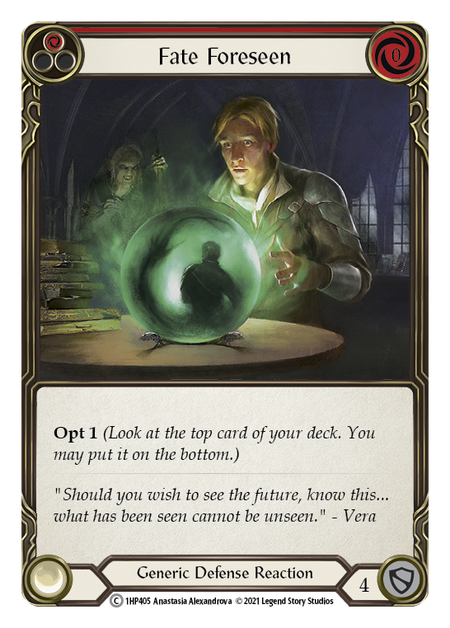
I will also be considering adding Fate Foreseen (Red) to the main/side list in the future. This will perhaps replace the Amulet of Ice slot in the deck, but of course it needs more testing. Amulet of Ice has been a fantastic card in my matches so far, with its only drawback being that it can’t block.
Deck Change Log - at a Glance
Lessons Learned
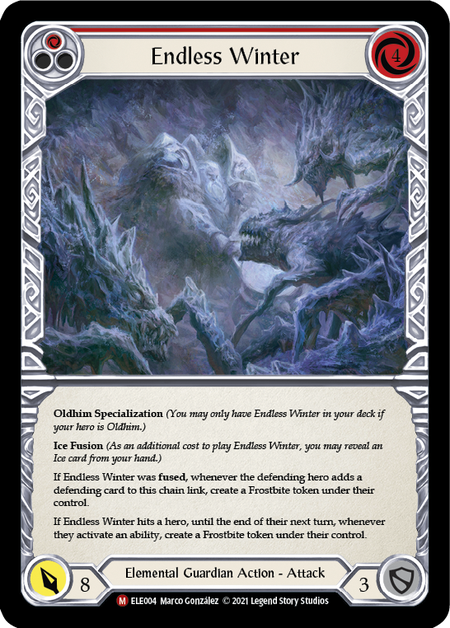
Endless Winter is fantastic. With the element/non-element ratios of the list improved and tweaked, it’s perhaps even a little too consistent; we're able to play this from Arsenal with a two-card hand, or simply three cards in hand, thanks to a single Seismic Surge token. With a little patience and setup, this card can do wonders, making it a priority offensive target for Remembrance in the late game. In my eyes, playing this card to its full potential is the most fun I could possibly be having while playing Flesh and Blood. It’s everything I want to be doing as a control player.
Let’s call Endless Winter what it is: a complete and utter devastation of your opponent’s next turn. Regardless of how our opponent interacts with Endless Winter, they are not having a fun time. Block it to preserve life? Get ready for a huge stack of Frostbite tokens. Don’t block and take eight? Use of abilities will be taxed heavily next turn. This has been THE card in the deck to truly enable the possibility of a fatigue strategy. Nothing strips cards from hand like an Endless Winter; it's just so consistent and powerful for its cost, especially when compounded with a Seismic Surge token. Managing to chain Endless Winter two turns in a row (usually from an Awakening fetch) can easily be game-ending for your opponent if they do not have the life total to weather at least one of the hits in full.
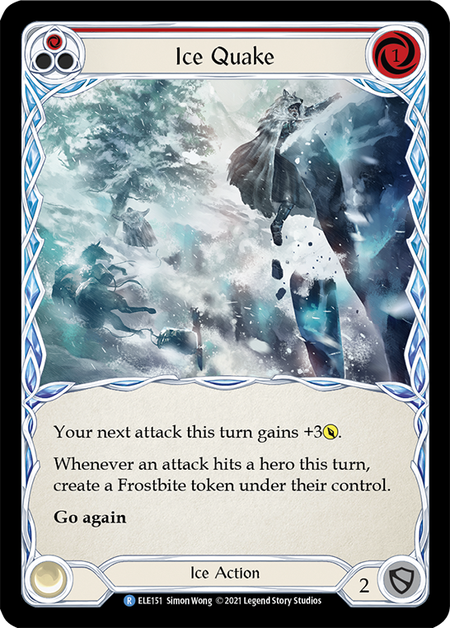
Endless Winter and Ice Quake (Red) are fantastic targets for Remembrance when you need to up the threat density in the late game. But keep your mind open to some of your other red attacks too, like Spinal Crush, Command & Conquer, and Oaken Old. Any of these cards make for devastating late-game positions.
Command and Conquer plus Ice Quake is as powerful as expected (if not more so). Many times, this will force three cards from your opponent’s hand and leave them with only one in hand to protect their arsenal slot. The power of this interaction has incentivized me to look to include the third copy of C&C in my next round of list updates and shift the pitch curve more aggressively. While C&C doesn’t interact with Seismic Surge tokens and cannot be tutored with Awakening, it remains inherently and independently powerful.
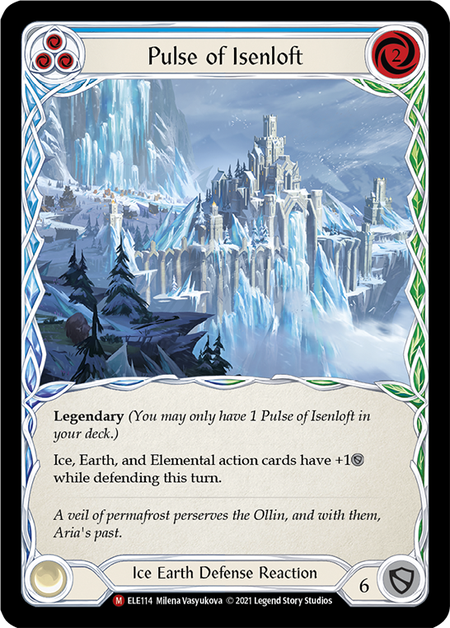
Pulse of Isenloft has been one of the more interesting cards in the deck. In many matches, when I still have copies of Endless Winter and Oaken Old remaining in the deck, I am inclined to hold back Pulse of Isenloft in-hand after using it to fuse a powerful attack during my turn. This may slow my draw, but it improves the threat of my remaining cards.
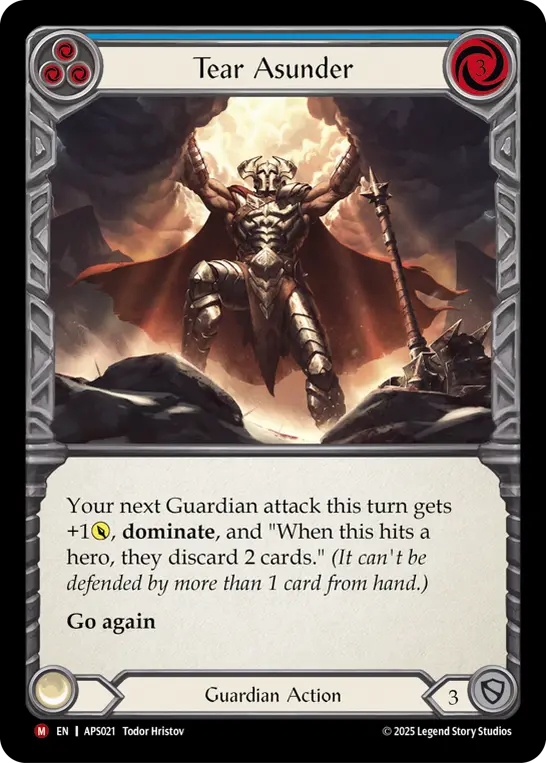
Pitch Tear Asunder early and often. This is a card that gains exponential value as the game approaches its close- when your opponent doesn’t have the armor or card support remaining to thoroughly deal with your dominate attacks. You don’t want to waste this card too early, when you are a lot less likely to get the on-hit effect. The fact that this can give dominate to Winter’s Wail- and give it a devastating on-hit effect- does wonders to close out the game when you are starting to run out of credible threats. Stealing two or three cards and pushing a Frostbite token with the mini-hammer means your opponent’s next turn is all but ruined.
(Against Lexi, Tear Asunder is much more likely to hit; use it early to either ruin their turn, or take a piece of equipment crucial to their strategy.)
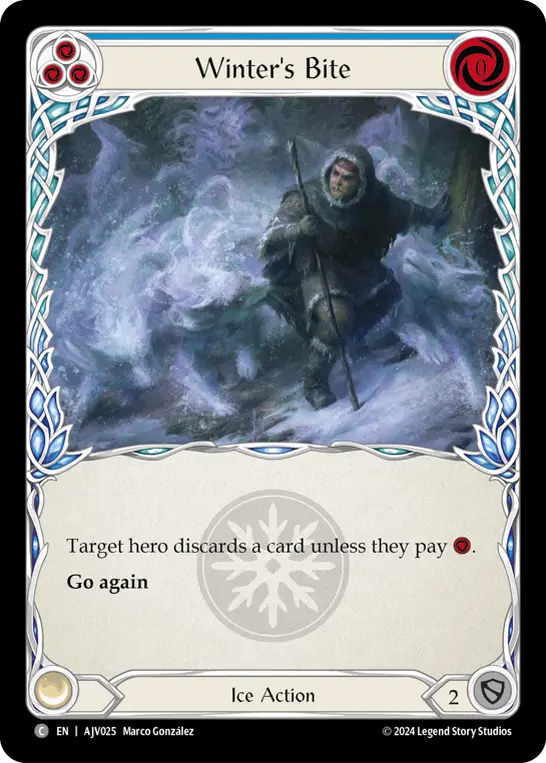
While it can be useful as an offensive tool, Winter’s Bite (Blue) has been inefficient. Spending a card only to have the opponent pitch and save their card does create an inefficiency that is counter-synergistic to the fatigue strategy. Extended testing shows that I was wrong to include this card in the earliest version of the deck. This was one of the cuts I have made to reintroduce the Rouse the Ancients (RtA) package.
Matchup Guide
We now have enough data to offer up an extensive matchup and sideboarding guide. Follow the link below to access that article.
Stay tuned for another updated decklist (supported by much more testing) and much more in part three of the series, coming in November. For now, If you’re following along and using the decklist yourself, I would advise you match my changes in the deck changelog if you are able to.
What questions about the deck do you have? What cards are you finding work well in Oldhim? Get involved in the conversation and let me know in the comments below! I will look to involve community questions in future parts of the series wherever possible.
Drew invites you to walk alongside him as he develops, adapts, and refines Oldhim from new release to honed contender. This free introduction shares some early insights into the core of Oldhim, setting up the 4-part Pro series that begins today.
by: Drew Cordell
Drew invites you to walk alongside him as he develops, adapts, and refines Oldhim from new release to honed contender.
by: Mark Chamberlain & Drew Cordell




